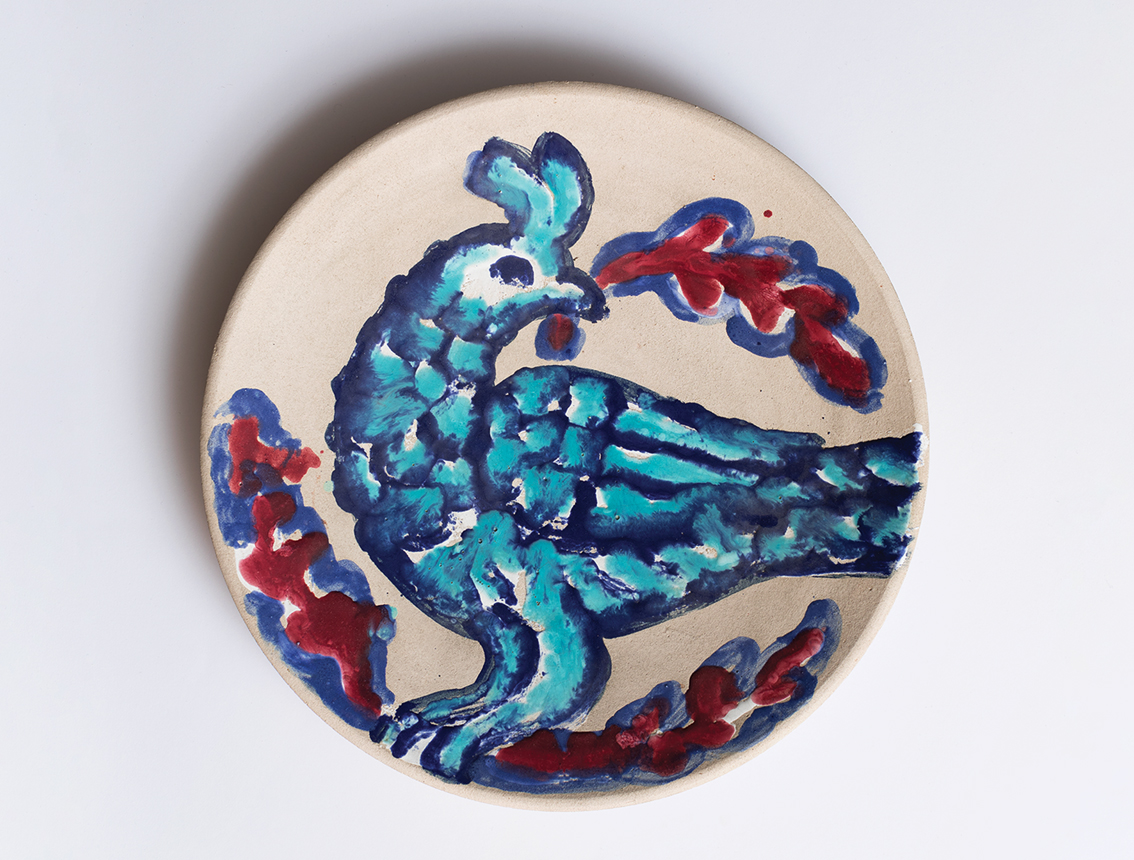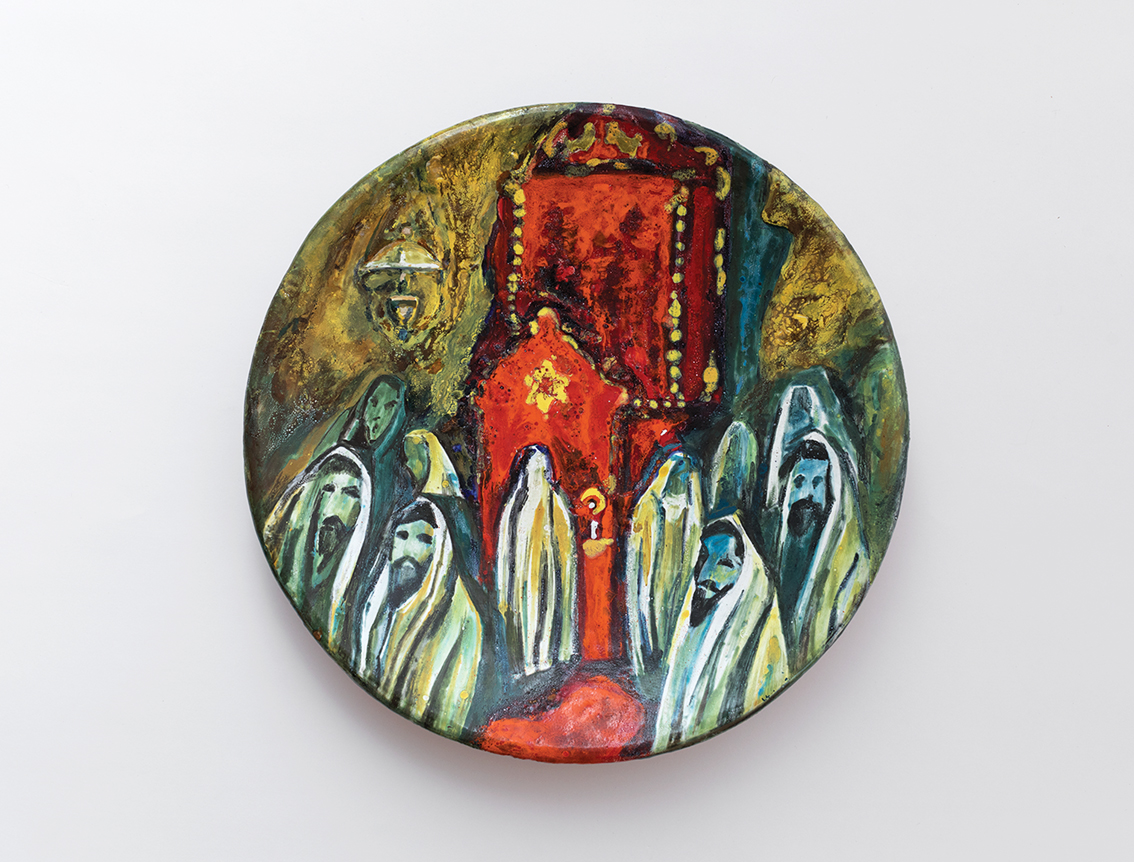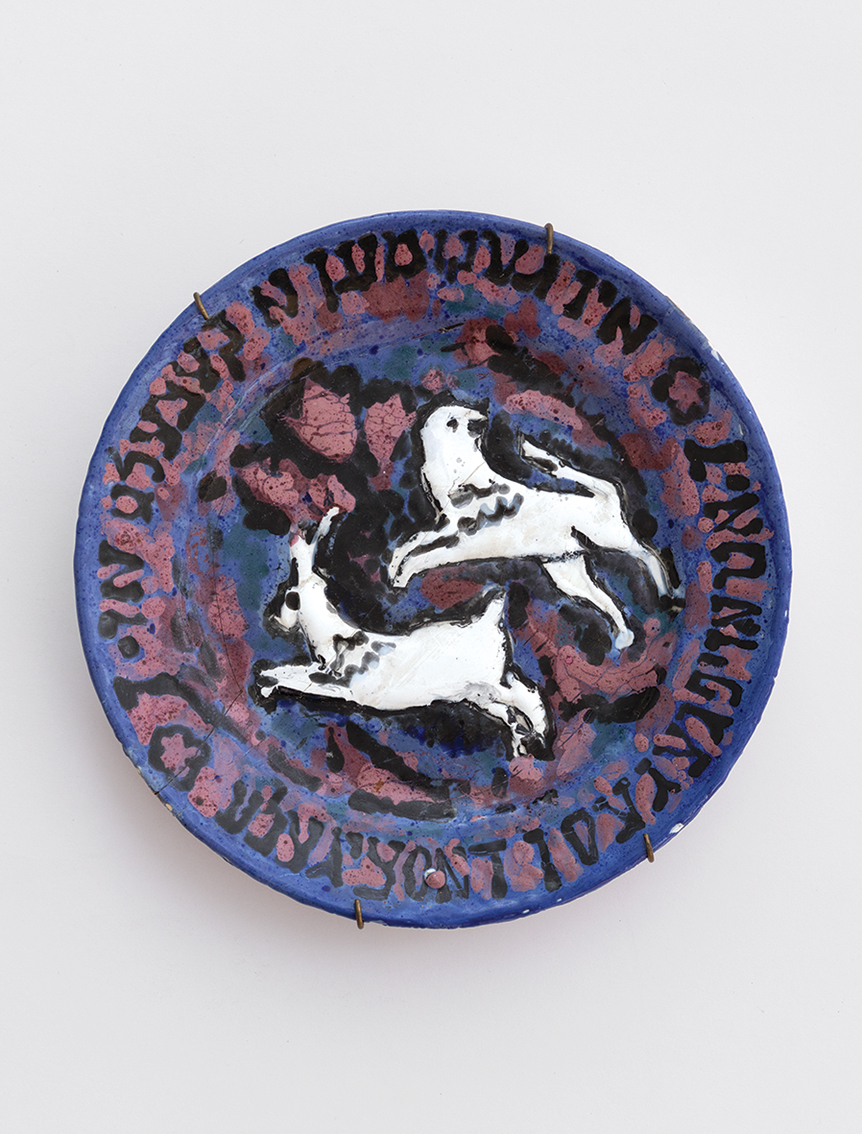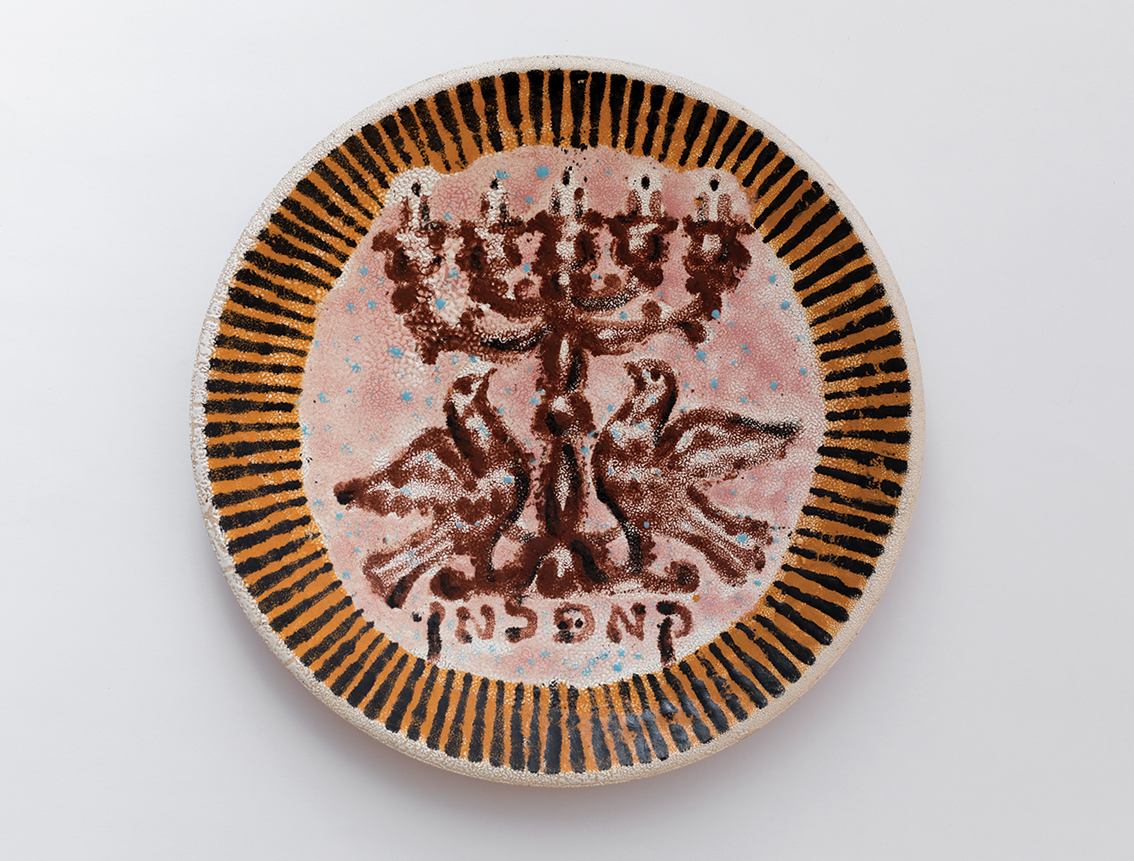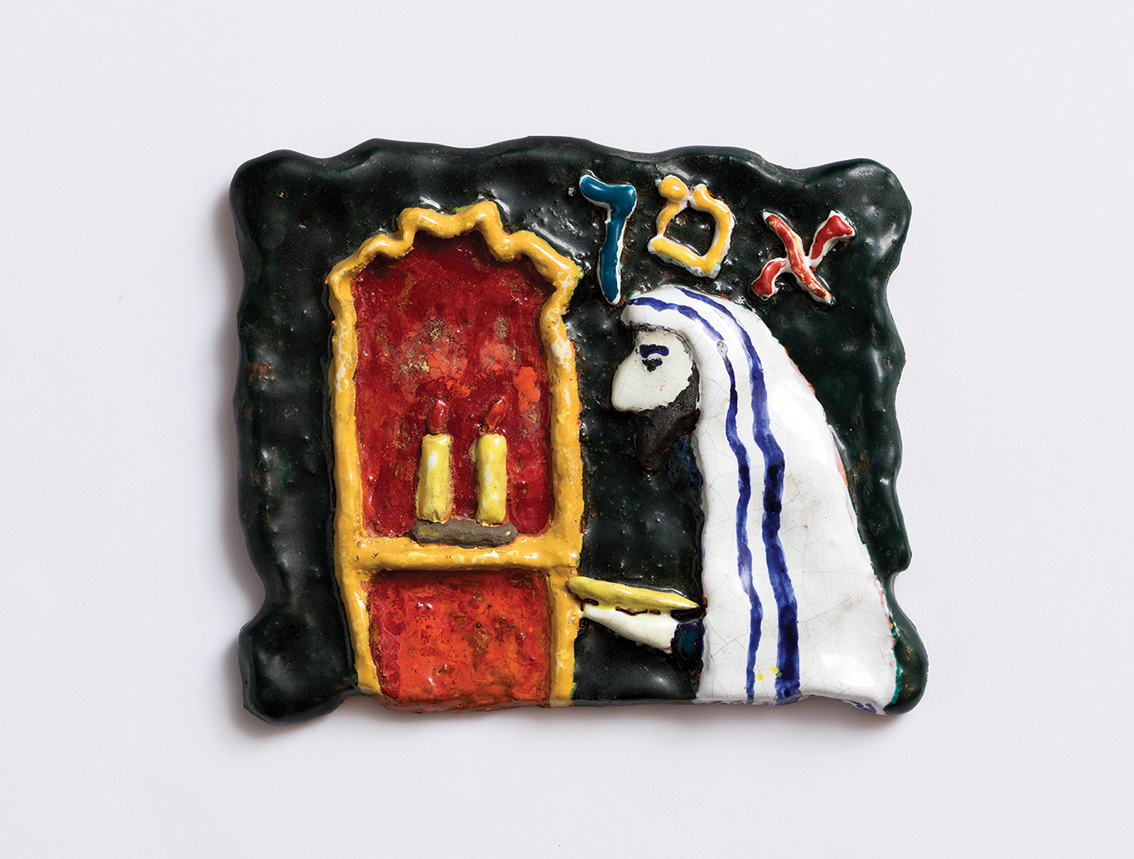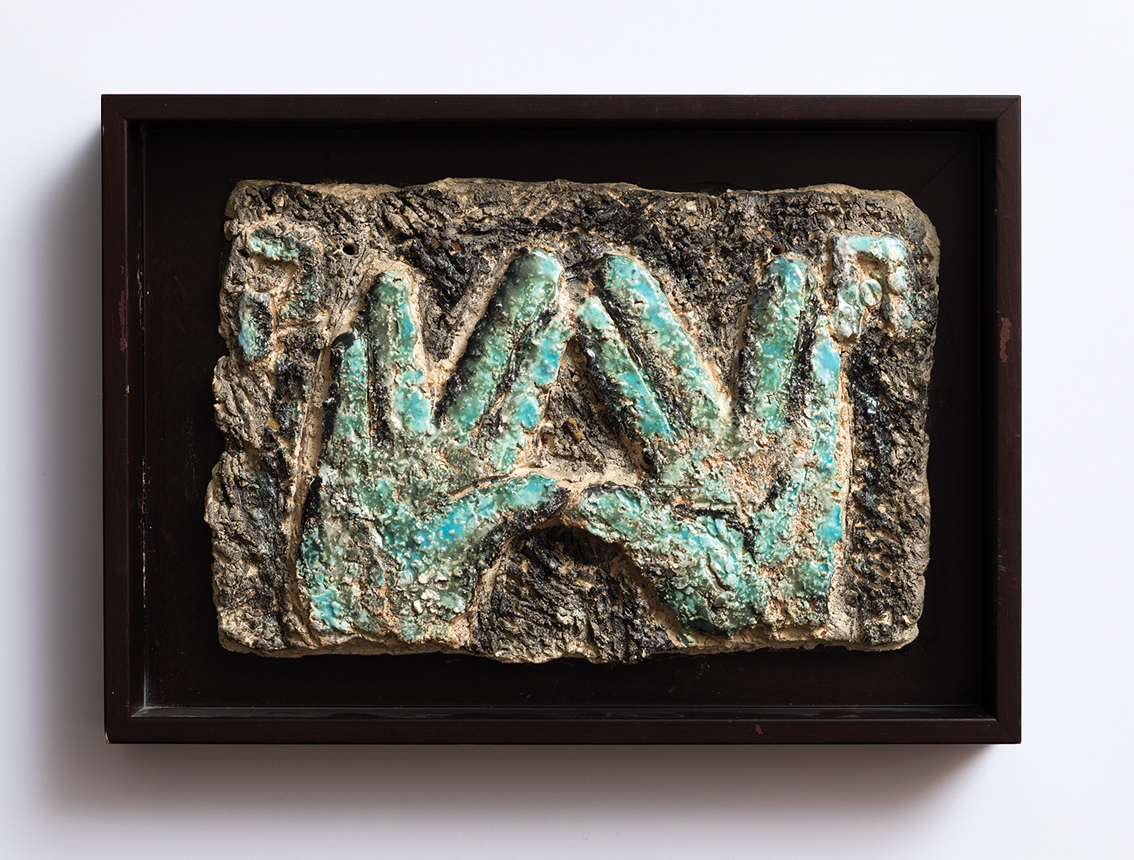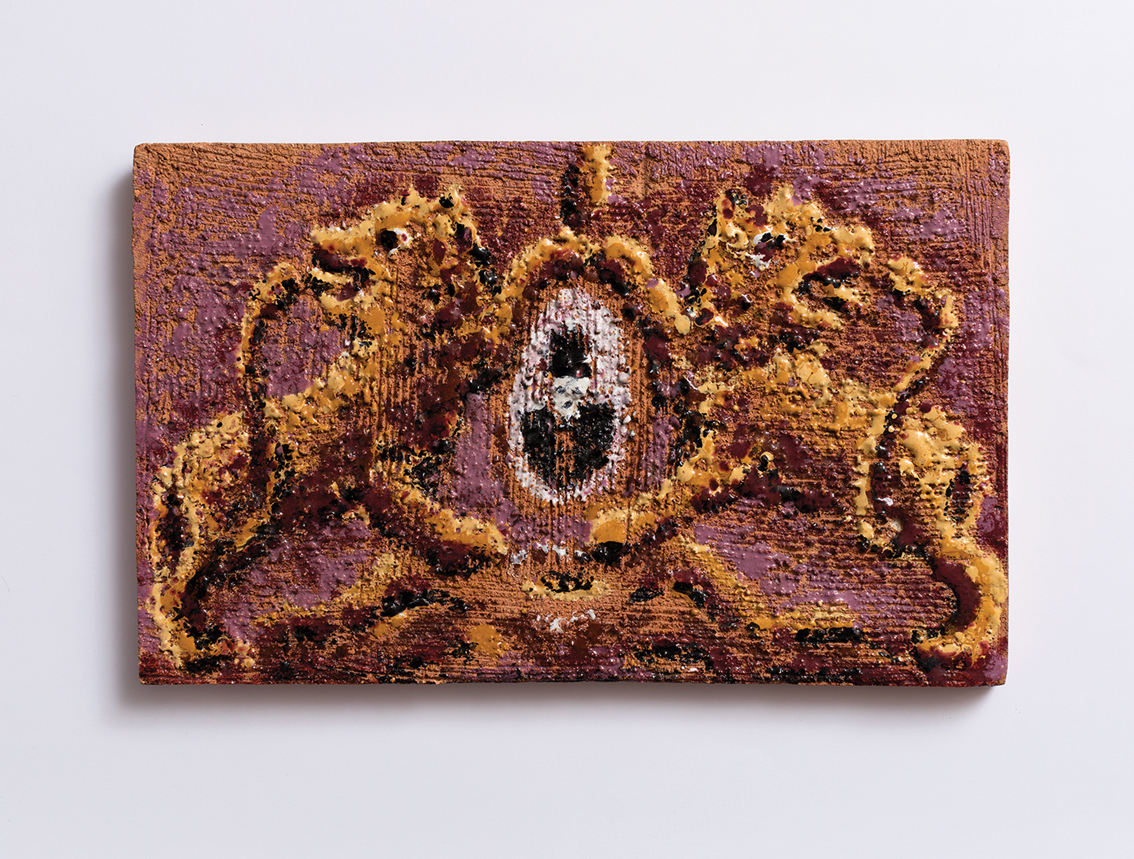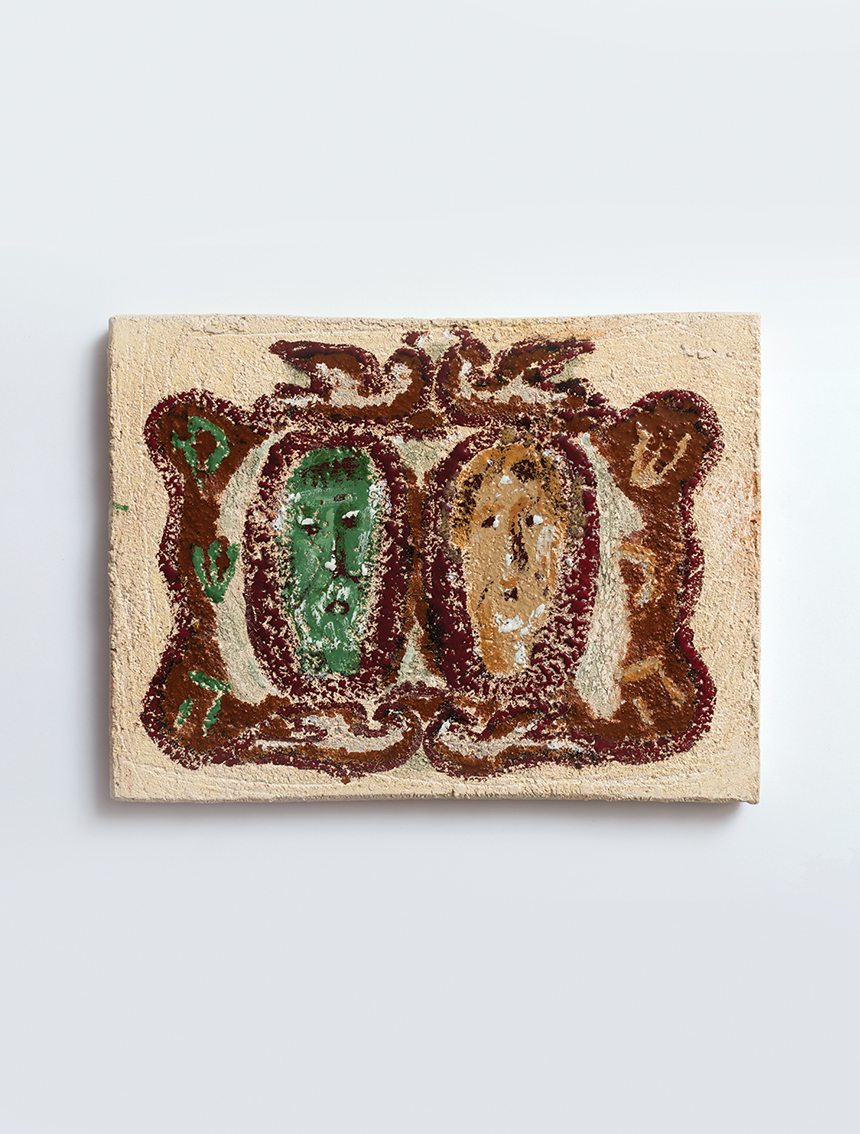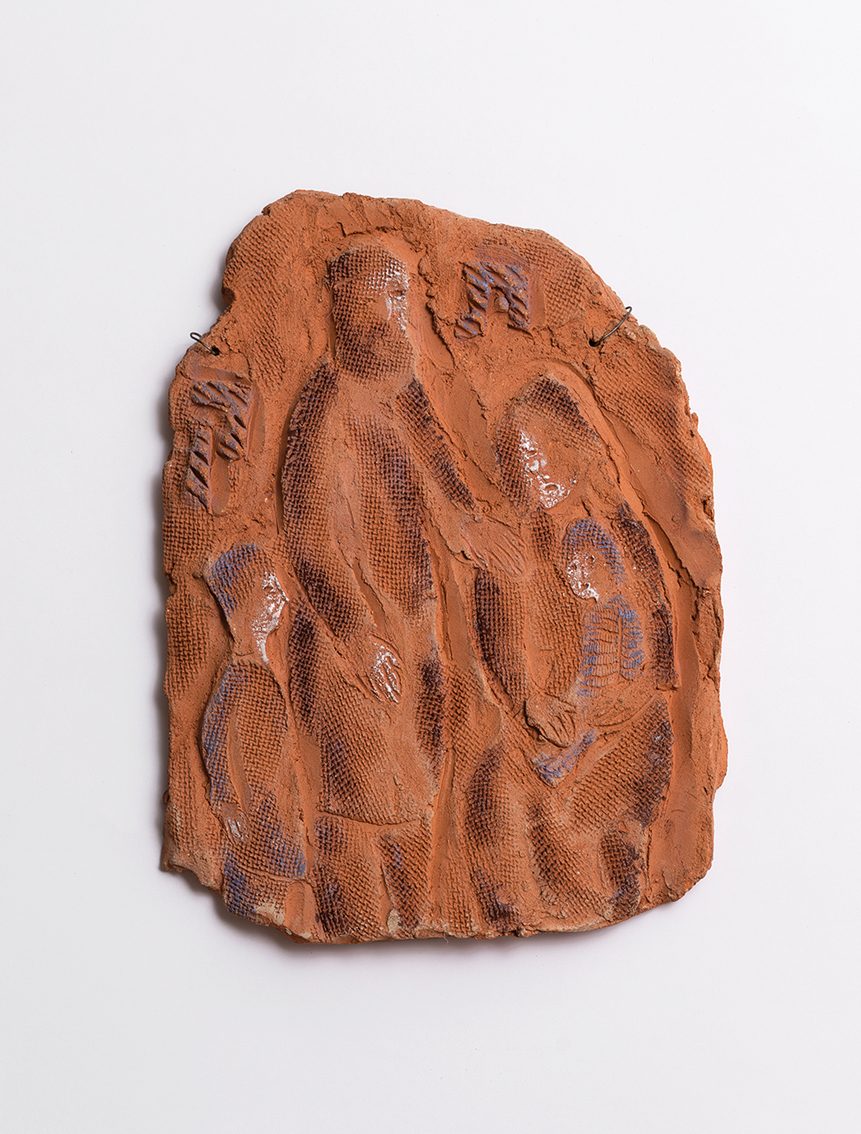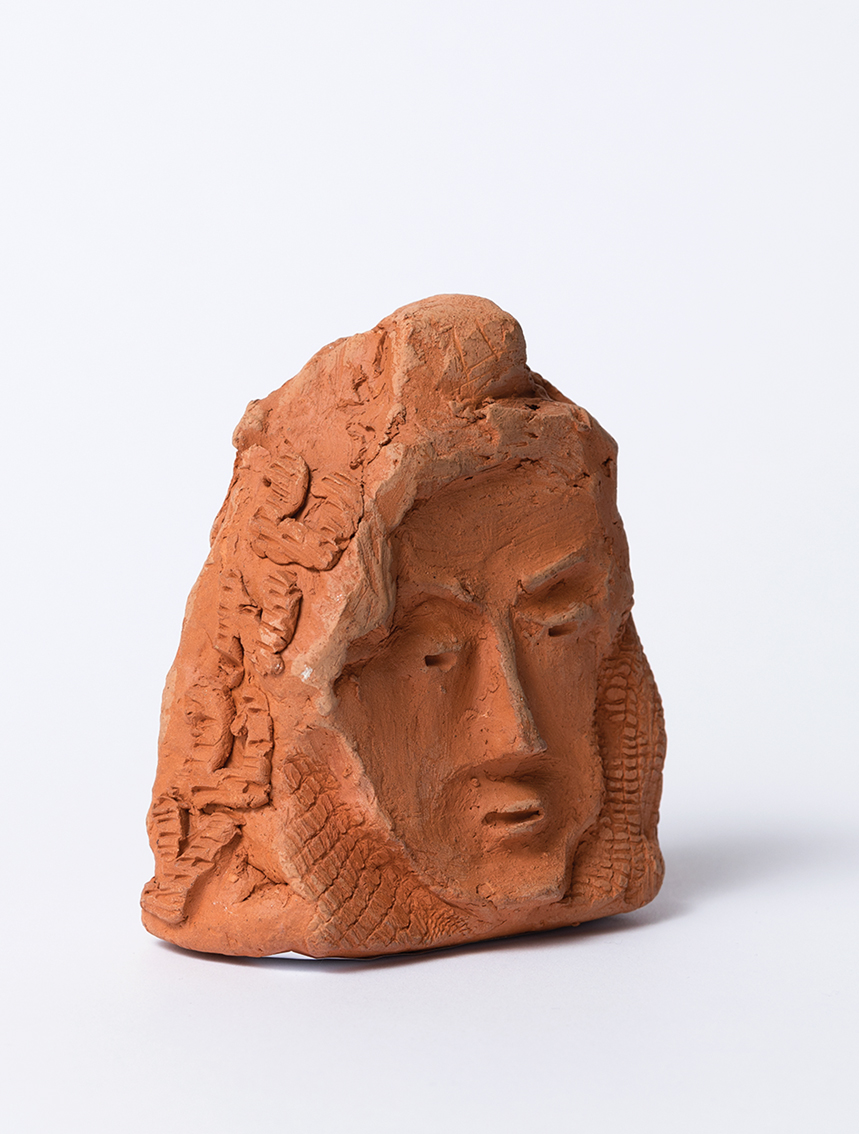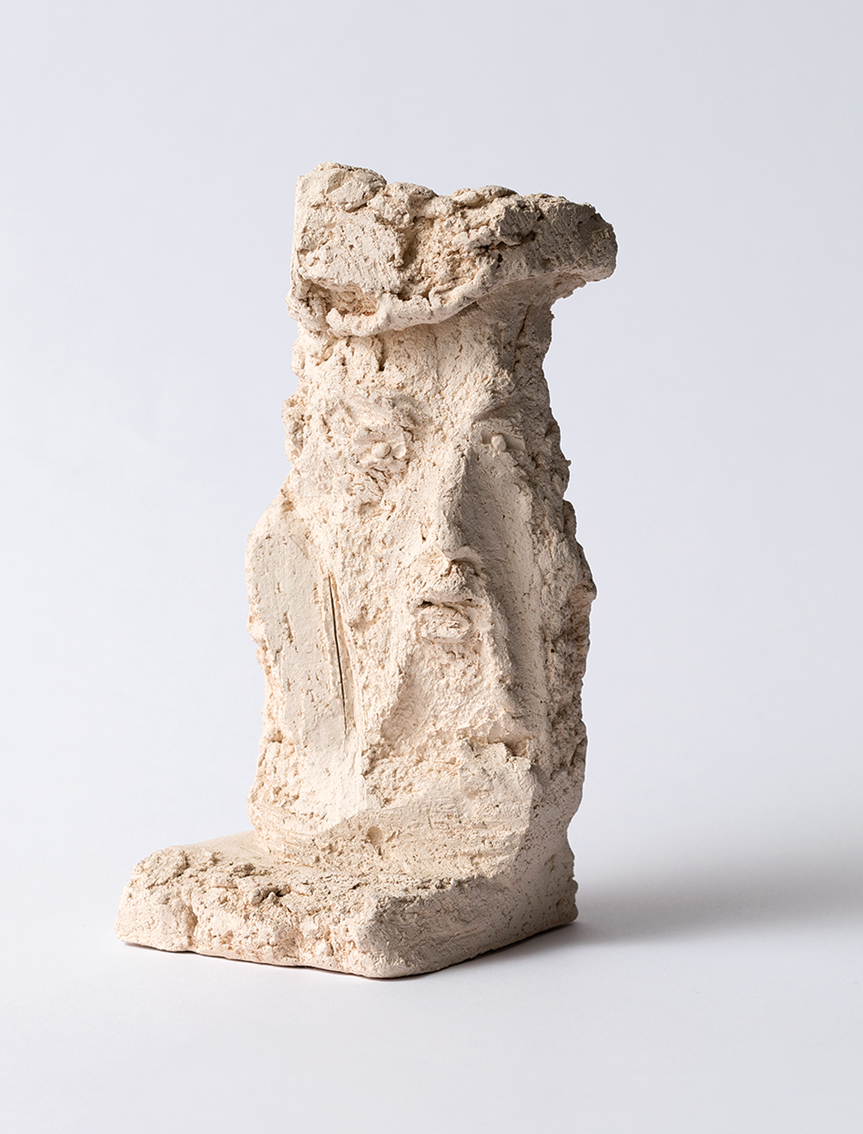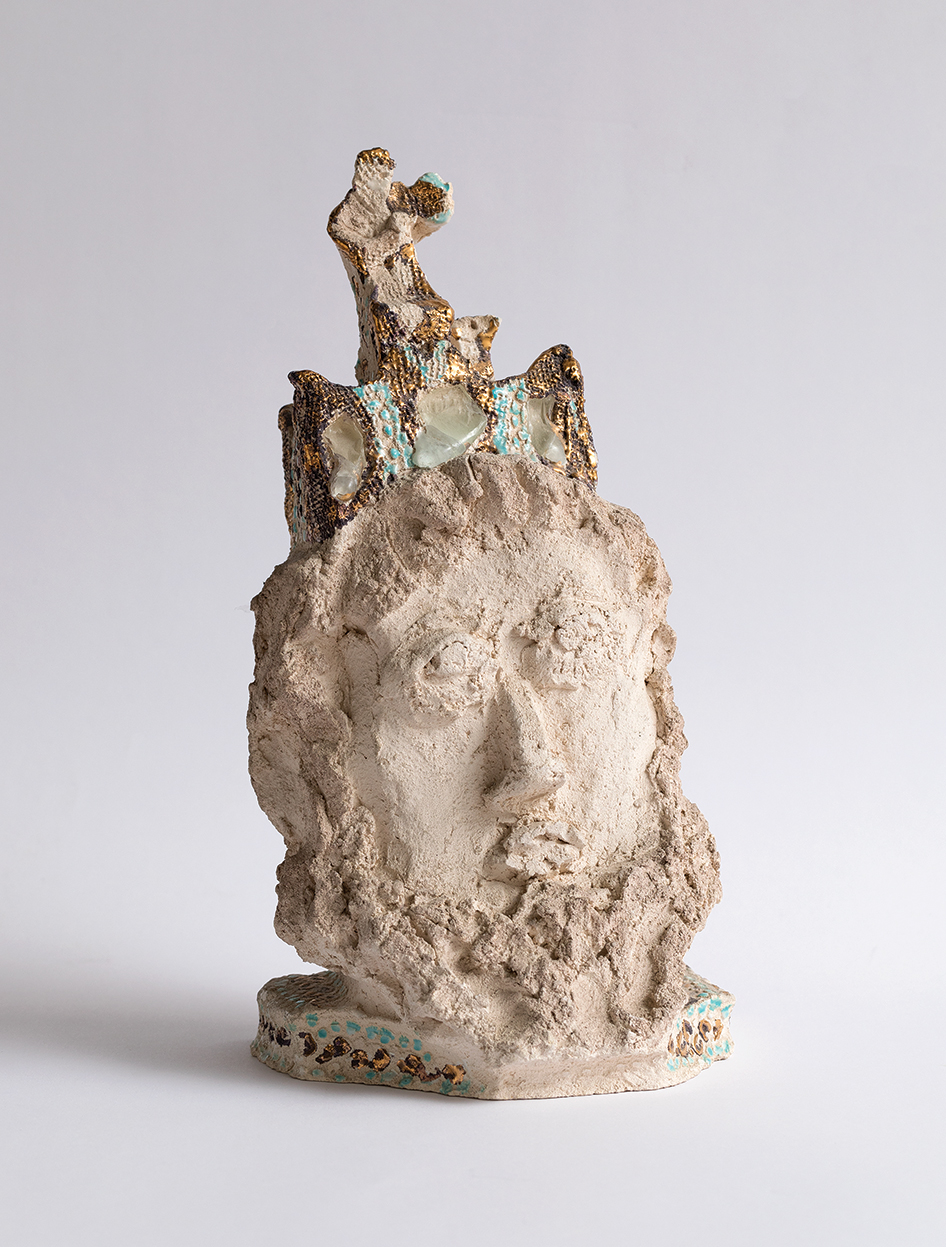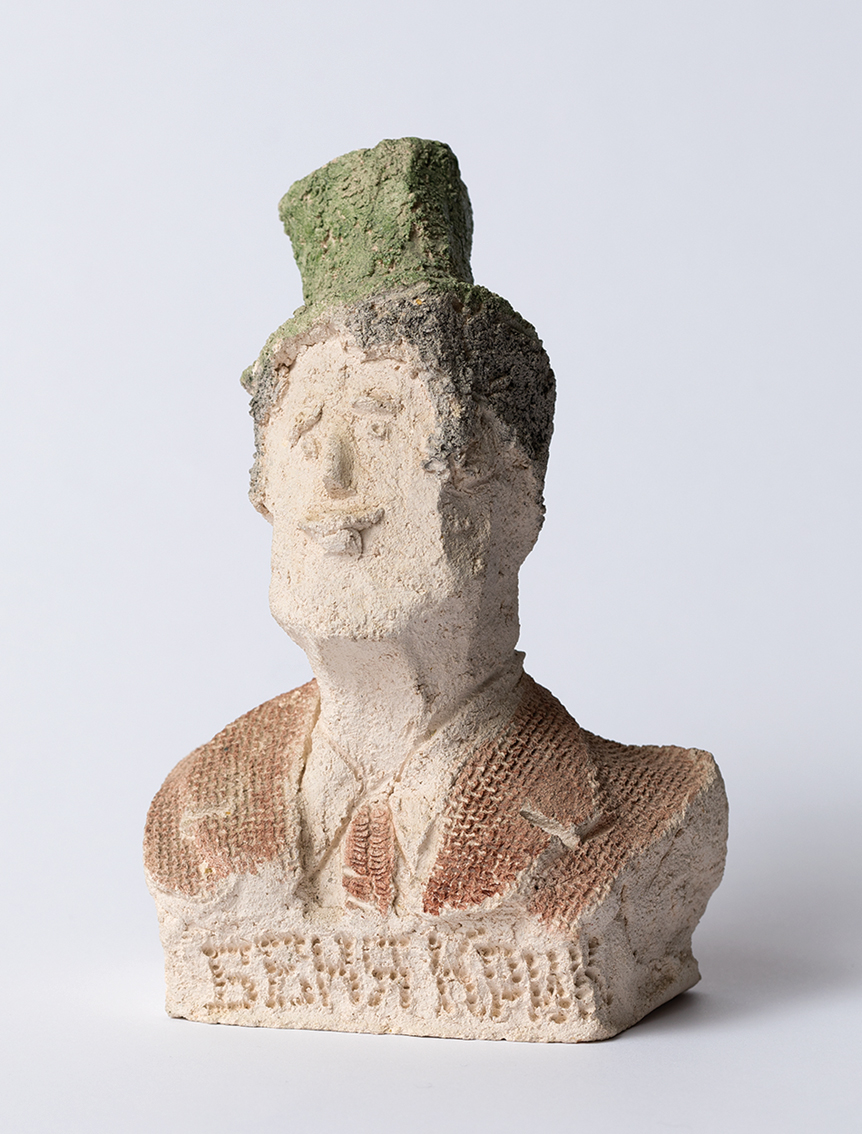In 1967, Anatoly Kaplan turns to yet another new artistic medium and creates artwork in ceramics. Kaplan sculpts from fireclay, molding, painting, glazing, at times adding forms onto flat slabs of clay, using engobe to decorate and to give his ceramics depth, color, dimensions, and visual range. As with his approach to lithography, Kaplan becomes a tormentor of clay, pinching, digging with his fingers, using metal objects to form shapes, at times adding gold, glaze, shiny glass, at others using simple lines and forms to create powerfully expressive and emotional pieces. There are several especially moving pieces, some that he creates as sculptures, others as flat slabs that remind us of matzevot (tombstones), that he dedicates to the memory of his family.
The subjects for Kaplan’s ceramics are variations on his favorite themes as well as sculptural portraits for Nikolai Gogol’s Dead Souls and Inspector General, busts for Isaac Babel’s Odessa Stories, and a series of ceramic plates and vases. In Kaplan’s own words: “After I reread Dead Souls, I could visualize each character, their faces and their psychological makeup so vividly that I had a strong desire to give them form. Soon, I was so possessed by this work…”
